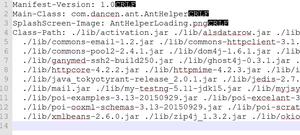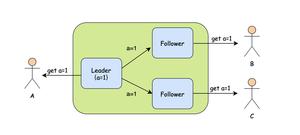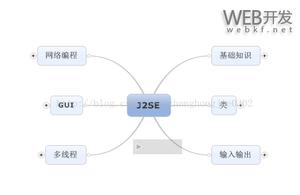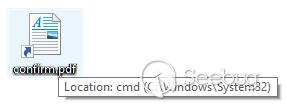Chapter 2 Basic Elements of JAVA

elaborate:详细说明
Data Types
Java categorizes data into different types, and only certain operations
can be performed on a particular type of data.
Data type: A set of values together with a set of operations on those values.
Primitive Data Types
There are three categories of primitive data types:
• Integral, which is a data type that deals with integers, or numbers
without a decimal part (and characters)
• Floating-point, which is a data type that deals with decimal numbers
• Boolean, which is a data type that deals with logical values
Integral data types are further classified into five categories: char, byte, short, int, and long.
Which data type you use depends on how big a number your program needs to deal with.
In the early days of programming, computers and main memory were very expensive.
Only a small amount of memory was available to execute programs and manipulate data.
As a result, programmers had to optimize the use of memory.
Table 2-2 gives the range of possible values associated with the five integral data types and
the size of memory allocated to manipulate these values.
java中字符编码采用的是Unicode,所以是16bit而不是c语言里面的8bit
boolean DATA TYPE
The data type boolean has only two values: true and false. The memory allocated for the boolean data type is 1 bit.
FLOATING-POINT DATA TYPES:float or double, the memory allocated for them respectively are 4 byte and 8 byte.
In java, by default, float-point refers to double.
关于负数的取余:http://ceeji.net/blog/mod-in-real/
总结
我们由此可以总结出下面两个结论:
- 对于任何同号的两个整数,其取余结果没有争议,所有语言的运算原则都是使商尽可能小。
- 对于异号的两个整数,C++/Java语言的原则是使商尽可能大,很多新型语言和网页计算器的原则是使商尽可能小。
Character arithmetic: Java allows you to perform arithmetic operations on char data.
class String
A string is a sequence of zero or more characters. Strings in Java are enclosed in double
quotation marks . To process strings effectively, Java provides the
class String. The class String contains various operations to manipulate a string. Technically speaking, the class String is not a primitive type.
A string that contains no characters is called a null or empty string.
Every character in a string has a specific position in the string. The position of the first
character is 0, the position of the second character is 1, and so on. The length of a string
is the number of characters in it.
Strings and the Operator +
One of the most common operations performed on strings is the concatenation operation,
which allows a string to be appended at the end of another string. The operator +
can be used to concatenate (or join) two strings as well as a string and a numeric value or a
character.
The complete description of this class can be found at the Web site http://java.sun.com/javase/7/docs/api/.
In program execution.
static final dataType IDENTIFIER = value; //注意static是可选的(optional)
the value stored in the identifier is fixed and cannot be changed.
identifier for a named constant is in uppercase letters. This is because Java programmers
the standard input device. The following statement accomplishes this:
static Scanner console = new Scanner(System.in);
The object console reads the next input as follows:
a. If the next input token can be interpreted as an integer, then the expression:
console.nextInt()
retrieves that integer; that is, the value of this expression is that integer.
b. If the next input token can be interpreted as a floating-point number, then
the expression:
console.nextDouble()
retrieves that floating-point number; that is, the value of this expression
is that floating-point number.
c. The expression:
console.next()
retrieves the next input token as a string; that is, the value of this
expression is the next input string.
d. The expression:
console.nextLine()
retrieves the next input as a string until the end of the line; that is, the
value of this expression is the next input line. (Note that this expression
also reads the newline character, but the newline character is not stored
as part of the string.)
While scanning for the next input, the expressions console.nextInt(),
console.nextDouble(), and console.next() skip whitespace characters. Whitespace
characters are blanks and certain nonprintable characters, such as newline and tab.
System.in is called a standard input stream object and is designed to input data from the
standard input device. However, the object System.in extracts data in the form of
bytes from the input stream. Therefore, using System.in, we first create a Scanner
object, such as console, as shown previously, so that the data can be extracted in a
desired form.
Reading a Single Character
Suppose the next input is a single printable character, say, A. Further suppose that ch is a
char variable. To input A into ch, you can use the following statement:
ch = console.next().charAt(0);
where console is as declared previously.
Increment and Decrement Operators
Output
The syntax to use the object System.out and the methods print and println is:
System.out.print(expression);
System.out.println(expression);
System.out.println();
Statement
collection of related classes. Moreover, every package has a name.
users to create their own data types.
Math. The name of the package containing the class Math is java.lang.
The package java.util contains the class Scanner. This class contains the methods
nextInt, nextDouble, next, and nextLine for inputting data into a program.
To see the complete definitions of the (predefined) Java classes, such as String, Math,
and Scanner, as well as the class hierarchy, you can visit the Web site http://
java.sun.com/javase/7/docs/api/.
In skeleton form, a Java application program looks like the following:
import statements if any
public class ClassName
{
named constants and/or stream objects declarations
public static void main(String[] args)
{
variable declaration
statements
}
}
Notice that the heading of the method main contains the reserved word static. The
statements to declare the named constants and the input stream objects are placed outside
the definition of the method main. Therefore, to use these named constants and stream
objects in the method main, Java requires that you declare the named constants and the
input stream objects with the reserved word static.
以上是 Chapter 2 Basic Elements of JAVA 的全部内容, 来源链接: utcz.com/z/393485.html








